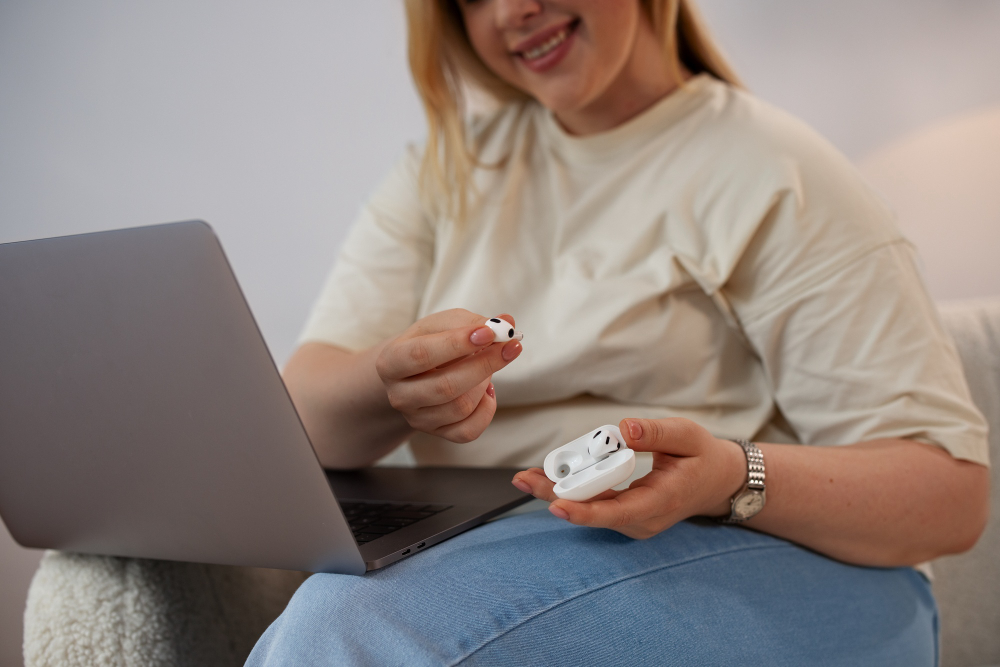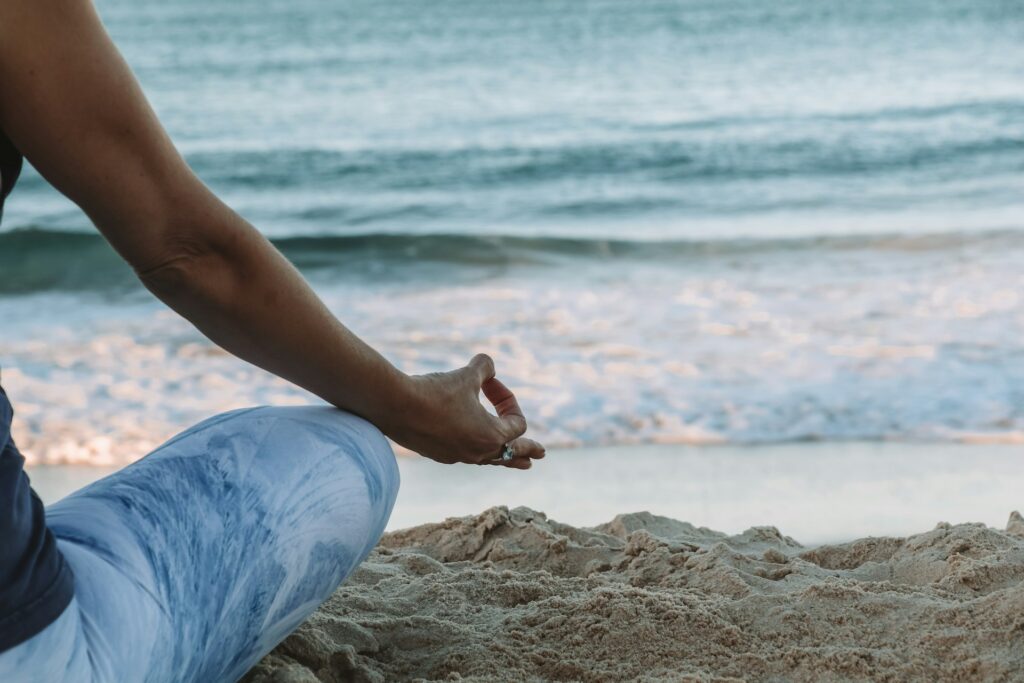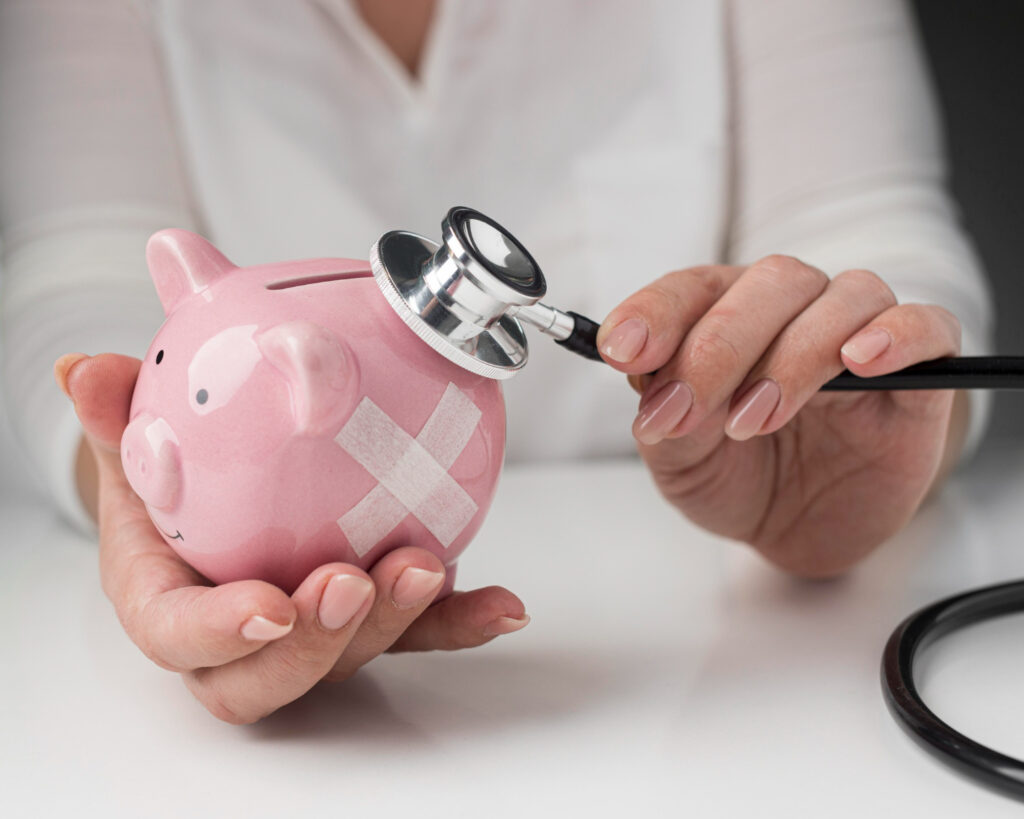Last Monday morning, I did something that felt almost radical in 2025: I left my AirPods at home. Not because I forgot them, not because they died—but because I’d made a conscious decision to spend an entire week living without any headphones or earbuds whatsoever.
I know, I know. It sounds dramatic. But hear me out (pun intended).
Like most people, I’d become completely dependent on my little white companions. They were my shield against awkward elevator silence, my productivity hack for focusing at work, and my personal soundtrack for everything from grocery shopping to long walks. I probably had them in my ears for at least 4-5 hours every single day.
But then I stumbled across some pretty eye-opening statistics that made me pause. Did you know that about 1 in 5 teenagers now experience some form of hearing damage—a rate that’s about 30% higher than it was 20 years ago? And while I’m not a teenager anymore (unfortunately), experts believe much of this increase is linked to our headphone habits.
That got me thinking: when was the last time I’d gone a full day without something plugged into my ears? I honestly couldn’t remember. So I decided to find out what a week of headphone-free living would actually feel like.
Day 1: The Withdrawal Was Real
The first morning was genuinely uncomfortable. My usual routine of popping in earbuds before even getting out of bed felt incomplete. Instead of my carefully curated morning playlist, I heard… well, everything. The neighbor’s dog barking. Birds chirping. The coffee maker gurgling. My own footsteps.
It was weirdly intimate, this unfiltered experience of my own morning.
The commute was the real test. Without my podcast buffer zone, I found myself making eye contact with other passengers on the subway. Some smiled back. Others looked equally lost without their audio shields. I realized how much we all use headphones as a “do not disturb” sign for the world around us.
The Unexpected Benefits Started Showing Up
By day three, something interesting happened. I started noticing sounds I’d been unconsciously tuning out for years. The rhythm of my own breathing during walks. The subtle changes in my neighborhood’s morning soundtrack—more delivery trucks on Tuesdays, kids playing outside around 4 PM on weekdays.
But the biggest surprise? My anxiety levels actually dropped.
I hadn’t realized how much mental energy I was spending managing my audio environment. Constantly adjusting volume, skipping songs, switching between music and podcasts, managing calls—it was like having a background app constantly running in my brain. Without it, there was this unexpected mental spaciousness.
Plus, removing your earbuds gives you a chance to hear what’s going on in the world and to interact with others, something I hadn’t fully appreciated until I experienced it firsthand.
The Sleep Connection I Didn’t See Coming
Here’s something I never connected before: my sleep quality improved dramatically during this week.
I’d been in the habit of falling asleep to podcasts or white noise through my earbuds. Not every night, but probably 3-4 times a week. I thought it was helping me relax, but removing that habit revealed something interesting—my natural sleep rhythms actually worked better without any audio input.
Instead of my brain trying to process voices or even ambient sounds while falling asleep, there was just… quiet. My mind could actually wind down instead of staying partially engaged with content.
What the Research Actually Says
Curious about whether my experience aligned with any actual science, I dug into what experts recommend about headphone use. Turns out, the World Health Organization recommends a maximum volume of 85 decibels (dB) for no more than 8 hours per day. To put that in perspective, a normal conversation hovers around 60 dB.
But here’s the kicker—most of us have no idea how loud we’re actually listening. And it’s thought that 1.1 billion young people are at risk of potentially life-altering hearing loss due to loud noise exposure.
The volume isn’t even the only issue. Since bacteria and fungi like to grow in dark, moist places, pulling out the earbuds also gives your ear canal a chance to air out, reducing your chance of infections. Gross but true—I’d never thought about my ear canals needing to “breathe.”
The Social Experiment I Didn’t Plan
Maybe the most unexpected part of this whole experience was how it affected my interactions with other people. Without headphones as a barrier, I found myself in more spontaneous conversations. The barista at my coffee shop commented on the book I was reading (instead of assuming I was busy with audio). A neighbor I’d only ever nodded at actually struck up a conversation about our shared frustration with the building’s elevator.
It made me realize how much our constant audio consumption signals to others that we’re unavailable, even when we might actually welcome interaction.
The Challenges Were Real Too
I don’t want to paint an overly rosy picture here. There were definitely downsides to my headphone-free week:
Productivity took a hit initially. I rely on instrumental music to focus during deep work, and the first few days without it were rough. I had to rediscover how to concentrate in regular environmental noise.
Awkward moments multiplied. Elevators, waiting rooms, grocery store lines—all those little pockets of social discomfort that headphones usually smooth over became more noticeable.
My commute felt longer. Without podcasts or audiobooks, my 35-minute train ride stretched endlessly some days.
Phone calls were actually harder. I realized how much I’d come to depend on headphones for work calls, and holding my phone to my ear for longer conversations was genuinely uncomfortable.
Finding a New Balance
By the end of the week, I didn’t want to swear off headphones forever—they’re genuinely useful tools. But the experiment taught me that I’d been using them as an automatic default rather than a conscious choice.
Now I’m more intentional about when and why I reach for them. I still use them for work calls, when I genuinely want to listen to something specific, or when I need to focus in a noisy environment. But I also regularly take “headphone breaks”—conscious periods where I let my ears and brain experience unfiltered reality.
Small Changes, Bigger Impact
Here are some simple shifts I’ve maintained since my experiment week:
Morning routine without audio: I start each day with at least 30 minutes of headphone-free time. Just me, my coffee, and whatever sounds naturally exist in my space.
One headphone-free walk per day: Even if it’s just to the mailbox and back, I take one walk each day without any audio input.
Bedtime audio boundaries: No earbuds after 9 PM. If I need sound to sleep, I use a small speaker at very low volume instead of something directly in my ears.
Volume check-ins: When I am using headphones, I periodically ask myself if I can still hear ambient noise around me. If not, I’m probably listening too loud.
The Bigger Picture
This experiment made me think about how we interact with silence and ambient sound in our daily lives. We’ve created a culture where constant audio input is the norm, where silence feels empty rather than peaceful.
But maybe our ears—and our brains—evolved to process the natural soundscape around us for good reasons. Maybe there’s value in hearing the unfiltered soundtrack of our actual lives instead of constantly curating our audio experience.
Research shows that listening to music at high volumes can lead to nerve damage inside the ear, which can lead to hearing loss. But beyond the potential physical risks, there might be subtler costs to our constant audio consumption that we’re only beginning to understand.
Would I Recommend It?
Absolutely, but maybe not for a full week right off the bat. If the idea of going completely headphone-free feels overwhelming, try starting smaller:
- One headphone-free hour each morning
- Walking to nearby destinations without audio
- Eating one meal per day in actual quiet
- Taking phone calls without earbuds when possible
The goal isn’t to become anti-technology or to shame anyone for loving their headphones. It’s about making conscious choices rather than defaulting to constant audio input.
My week without headphones reminded me that the world has its own soundtrack—one that includes not just noise and distractions, but also birds, conversations, footsteps, and yes, even moments of genuine quiet. And sometimes, that natural audio experience is exactly what we need.
So here’s my challenge for you: when did you last spend a full hour in your normal environment without anything in your ears? If you can’t remember, maybe it’s worth finding out what you’ve been missing.
After all, your ears—and the world around you—might have more interesting things to say than you think.

Disclaimer: This article is for informational and lifestyle purposes only and should not be considered medical advice. Information about hearing health is based on publicly available research and general recommendations. If you have concerns about your hearing or experience symptoms like ringing in your ears, muffled hearing, or ear pain, please consult with a qualified healthcare professional or audiologist. Individual experiences may vary, and this article is not intended to diagnose, treat, or provide professional medical guidance.
Sources: Content informed by research from University of Utah Health, Harvard Health Publishing, American Osteopathic Association, World Health Organization, Cleveland Clinic, and other health education resources.



